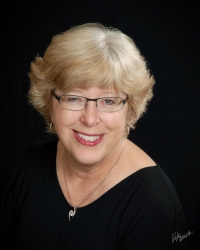Being Second Doesn't Mean Second Best
Every novel has a protagonist (the hero, the mover and shaker of the story) and an antagonist (the villain, who obstructs the hero’s success). Most often these are characters that avid readers, like you and me, either love or love to hate.
Occasionally, we discover the protagonist is not the main character. Sometimes the antagonist is so central to the story, they step into that role. Consider The Talented Mr. Ripley by Patricia Highsmith or Heathcliff in Emily Bronte’s Wuthering Heights.
And sometimes the antagonist is nature (setting). Think Jon Krakauer’s Into the Wild and Into Thin Air or Thoreau’s Walden.
No matter the role of the protagonist or antagonist, usually they are the most memorable characters in the story—we either root for them to win or pray they’ll lose. Oftentimes, we assign actors to them in our minds, as if we are the casting director when the book goes to the big screen (cinema) or streams into our homes or devices.
But what of the rest of the cast—those secondary characters, or sidekicks—that authors throw into the plot for good measure?
What is their purpose? And can we, or the main characters, live without them?
Since secondary characters rarely have anything to hide, they are often the most honest players in the story. As such, here are five roles, I think, secondary characters play:
- As a foil, providing contrast to the protagonist
- Giving the main character someone to talk to, one-on-one
- Creating a mirror into which the protagonist’s soul can be revealed
- Helping to weave in backstory with minimal narration
- Allowing the author to embed breadcrumbs ahead of the climax/conclusion
It’s not unusual for readers to love secondary characters. Take Hermione Granger in J.K. Rowling’s Harry Potter series. Or Eowyn from The Lord of the Rings Trilogy by J. R. R. Tolkein.
Sometimes they become as popular as the main character; so much so, they spin-off into their own book. A prime example is Gregory Maguires, Wicked, where he provides a prequel and alternative narrative to Dorothy’s three infamous companions, as well as to other secondary and lesser characters depicted originally in The Wonderful Wizard of Oz by L. Frank Baum.
Secondary characters play critical roles in my books, as well. In What’s Not Said, one such character is Kassie’s BFF, Annie, who keeps her honest in her beliefs and cares for Kassie when she’s down and out. I was startled when readers asked for more of Annie and the Kassie/Annie friendship in a separate novel.
And then there’s Topher, a cat who offers his own opinions of the humans around him.
While both Annie and Topher continue their roles in the sequel, What’s Not True, I was tickled when one reviewer said she was dismayed that Topher didn’t have as big a role in the second book as he seemed to have in the first where “he stole the show at times.” She went on to suggest, “He needs his own book (or at least a short story).”
I can report that both Annie and Topher are cast in the third book of the trilogy, but as to whether I’ll spin either or both into separate books remains to be seen. Bottom line, I better get writing. The entire cast is waiting!
Originally posted on WestveilPublishing.com as part of an iRead Book Tour.
.png)

_w200_h/A%20Whale%20of%20a%20Murder%20Front%20Cover%20(1)_02240335.png)